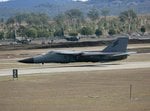Great reply!
Navigation
Install the app
How to install the app on iOS
Follow along with the video below to see how to install our site as a web app on your home screen.
Note: This feature may not be available in some browsers.
More options
You are using an out of date browser. It may not display this or other websites correctly.
You should upgrade or use an alternative browser.
You should upgrade or use an alternative browser.
On The Deck
- Thread starter Njaco
- Start date
Ad: This forum contains affiliate links to products on Amazon and eBay. More information in Terms and rules
More options
Who Replied?Matt308
Glock Perfection
Aaron Brooks Wolters
Brigadier General
evangilder
"Shooter"
I have to agree. When you put up the money to buy and maintain one of these historic aircraft, you can paint it any color you like. There are a few around that I don't particularly care for the paint schemes on, but say nothing as at least I am able to see them flying. I did make the mistake one time of stating that one scheme was "hideous". I got chided that if it doesn't belong to you, it's not your business. Fair point, and now I just bite my lip.
Great clip Matt!
Shame he passed away though, the story behind the flight is just as good as the video itself.
Shame he passed away though, the story behind the flight is just as good as the video itself.
- Thread starter
- #226
Njaco
The Pop-Tart Whisperer
Matt308
Glock Perfection
Damn that Halifax is low!!!
Cool shots!
stug3
Staff Sergeant
One of the biggest problems during the Kokoda campaign was supply. Douglas DC-3 transport aircraft became known as 'biscuit bombers' as they dropped supplies along the Kokoda Track. These supplies were then collected and carried to the forward lines by Papuan carriers. Supplies were dropped into clearings, although many supplies missed their target and fell into the surrounding jungle or were dropped from too high an altitude and were smashed when they hit the ground. Supply dropping improved as the battle along the Kokoda Track developed. Pilots and crews became better able to pinpoint the drop areas and fly at the optimum height for the dropping of packages, however the supplies then still had to be hauled for up to three days to the front line.

swampyankee
Chief Master Sergeant
- 4,164
- Jun 25, 2013
Alas, I've no pictures, but one of my uncles flew B-24s with the Carpetbaggers. He told stories about pulling up to go over church steeples. At night.
- Thread starter
- #231
Njaco
The Pop-Tart Whisperer
Aaron Brooks Wolters
Brigadier General
More good finds Chris!
Good stuff!
Fine selection again Chris!
Aaron Brooks Wolters
Brigadier General
GrauGeist
Generalfeldmarschall zur Luftschiff Abteilung
Either that pilot is insane or they're about to belly-in...
Aaron Brooks Wolters
Brigadier General
He may have forgotten something.
I'm inclined to go with insane...
vikingBerserker
Lieutenant General
DAM!
Aaron Brooks Wolters
Brigadier General
Users who are viewing this thread
Total: 1 (members: 0, guests: 1)


